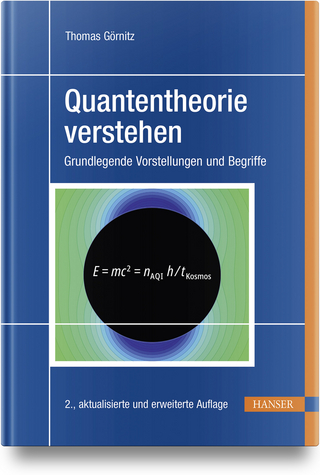
Introduction to Topological Quantum Computation
Seiten
2012
Cambridge University Press (Verlag)
978-1-107-00504-4 (ISBN)
Cambridge University Press (Verlag)
978-1-107-00504-4 (ISBN)
In this book, a variety of different topics are presented together for the first time, forming a thorough introduction to topological quantum computation. Keeping high-level and technical language to a minimum, the author adopts a pedagogical style, making the book accessible to non-specialists and researchers from a variety of sub-disciplines.
Combining physics, mathematics and computer science, topological quantum computation is a rapidly expanding research area focused on the exploration of quantum evolutions that are immune to errors. In this book, the author presents a variety of different topics developed together for the first time, forming an excellent introduction to topological quantum computation. The makings of anyonic systems, their properties and their computational power are presented in a pedagogical way. Relevant calculations are fully explained, and numerous worked examples and exercises support and aid understanding. Special emphasis is given to the motivation and physical intuition behind every mathematical concept. Demystifying difficult topics by using accessible language, this book has broad appeal and is ideal for graduate students and researchers from various disciplines who want to get into this new and exciting research field.
Combining physics, mathematics and computer science, topological quantum computation is a rapidly expanding research area focused on the exploration of quantum evolutions that are immune to errors. In this book, the author presents a variety of different topics developed together for the first time, forming an excellent introduction to topological quantum computation. The makings of anyonic systems, their properties and their computational power are presented in a pedagogical way. Relevant calculations are fully explained, and numerous worked examples and exercises support and aid understanding. Special emphasis is given to the motivation and physical intuition behind every mathematical concept. Demystifying difficult topics by using accessible language, this book has broad appeal and is ideal for graduate students and researchers from various disciplines who want to get into this new and exciting research field.
Jiannis K. Pachos is a Reader in the School of Physics and Astronomy at the University of Leeds. He works on a variety of research topics, ranging from quantum field theory to quantum optics. Dr Pachos is a University Research Fellow of the Royal Society.
Part I. Preliminaries: 1. Introduction; 2. Geometric and topological phases; 3. Quantum computation; 4. Computational power of anyons; Part II. Topological Models: 5. Quantum double models; 6. Kitaev's honeycomb lattice model; 7. Chern–Simons quantum field theories; Part III. Quantum Information Perspectives: 8. The Jones polynomial algorithm; 9. Topological entanglement entropy; 10. Outlook; Index.
| Erscheint lt. Verlag | 12.4.2012 |
|---|---|
| Zusatzinfo | 103 Line drawings, unspecified |
| Verlagsort | Cambridge |
| Sprache | englisch |
| Maße | 188 x 249 mm |
| Gewicht | 640 g |
| Themenwelt | Naturwissenschaften ► Physik / Astronomie ► Quantenphysik |
| ISBN-10 | 1-107-00504-3 / 1107005043 |
| ISBN-13 | 978-1-107-00504-4 / 9781107005044 |
| Zustand | Neuware |
| Haben Sie eine Frage zum Produkt? |
Mehr entdecken
aus dem Bereich
aus dem Bereich
Grundlegende Vorstellungen und Begriffe
Buch | Hardcover (2024)
Carl Hanser (Verlag)
CHF 62,95


